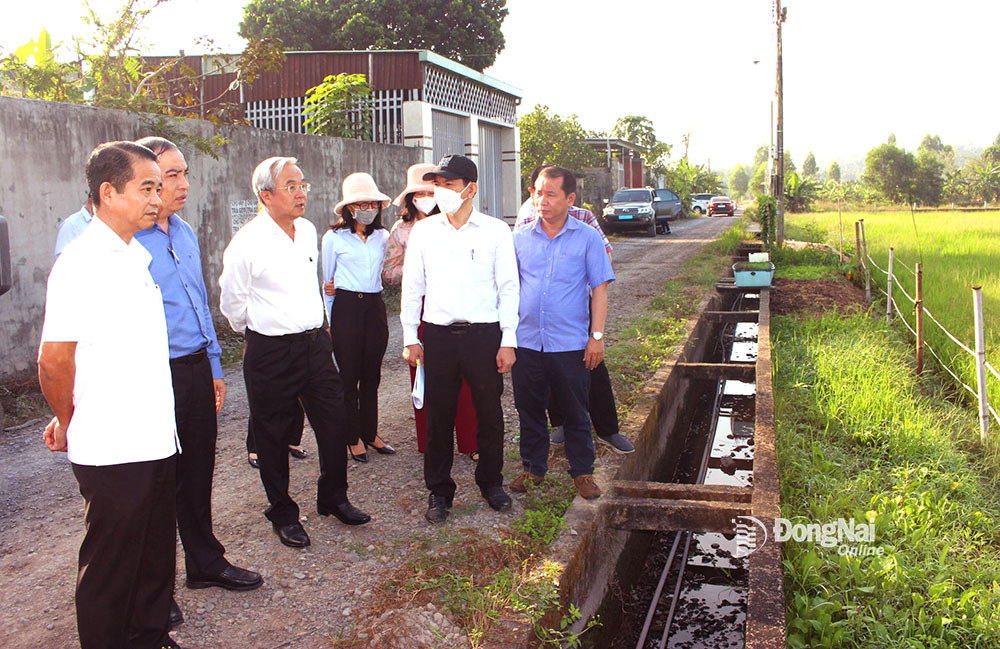(DN)- According to Vice Chairman Ho Van Ha of the Dong Nai provincial People's Committee, the construction of two resettlement areas (RAs) serving the Bien Hoa - Vung Tau Expressway project must be expedited. Additionally, the implementation of these RAs must ensure both progress and construction quality.
 |
Over 2,300 resettlement plots to be available soon
Bien Hoa City is currently executing multiple key projects, many of which require land acquisition and relocation of residents. Ensuring proper resettlement is a crucial prerequisite for land clearance and project execution as planned.
To date, Bien Hoa has designated several resettlement areas, with two major ones: a 49-hectare site in Phuoc Tan Ward and a 31.5-hectare site in Tam Phuoc Ward. These areas are intended for resettling displaced residents from Component Project 1 of the Bien Hoa - Vung Tau Expressway, with the Dong Nai Land Development Center overseeing investment.
Mai Phong Phu, Director of the Dong Nai Land Development Center, stated that the 49-hectare site in Phuoc Tan Ward will provide 1,066 resettlement plots. The city has already approved its 1/500-scale detailed construction plan, while the province has sanctioned its feasibility study report, and the Ministry of Natural Resources and Environment has approved its environmental impact assessment. Infrastructure construction is scheduled to commence in June 2025, with an estimated eight-month completion time. By early 2026, the area should be ready for residents to build their homes.
For Component Project 1 of the expressway, over 1,500 households will be displaced. Bien Hoa City has allocated two resettlement areas covering over 80 hectares, providing more than 2,300 plots in total.
Meanwhile, the 31.5-hectare site in Tam Phuoc Ward is expected to provide 1,280 resettlement plots. It has also received necessary approvals for its 1/500-scale construction plan, feasibility study, and environmental permits. The project is scheduled to begin construction in April 2025 and is expected to be completed by October 2025.
However, as of now, Bien Hoa’s People's Committee has not issued a land acquisition notice for the 31.5-hectare project, delaying further steps. The Land Development Center has urged the city to expedite this process to allow for compensation, site clearance, and timely groundbreaking.
In addition, both resettlement areas lack finalized land pricing frameworks, making it difficult for officials to inform residents about land-use fees. Without this transparency, affected households remain hesitant to hand over their land.
Developing high-quality resettlement urban areas
Bien Hoa City faces a significant shortage of resettlement land, particularly for large-scale projects. For example, Component Project 1 of the Bien Hoa - Vung Tau Expressway alone will displace 1,500 households. So far, only 80 households have been allocated plots, while the majority are still waiting for the new resettlement areas to be built.
Hoang Thi Nam, a resident of Thien Binh neighborhood, Tam Phuoc Ward, was among the first to receive a resettlement plot. She shared that in January 2025, she was allocated a plot but had to relocate to Long Thanh District since the local resettlement site in Tam Phuoc was not yet developed.
"For me, whether it’s in Bien Hoa or Long Thanh, what matters is that the new location has good infrastructure, a clean living environment, and proximity to schools, markets, and healthcare services," Nam said.
During a recent working session with the Land Development Center, Vice Chairman Ho Van Ha emphasized that proper resettlement planning is key to facilitating land clearance and infrastructure projects. The two resettlement areas for the expressway must be well-planned to become high-quality urban developments. He also stressed the importance of selecting capable and responsible contractors to ensure project completion meets quality and deadline expectations.
Furthermore, provincial authorities have instructed the Land Development Center to collaborate with localities to identify large, well-positioned plots for future resettlement projects. This proactive approach aims to ensure that resettlement areas are ready before land acquisition begins, thereby streamlining public investment projects.
Under Vietnam’s current Land Law, provincial and district authorities must develop and implement resettlement plans before acquiring land from residents. These resettlement areas must meet comprehensive infrastructure standards, including roads, utilities, and public services, as outlined in approved detailed master plans. A single resettlement area can serve one or multiple projects depending on its capacity.
Reported by H. Loc




Thông tin bạn đọc
Đóng Lưu thông tin